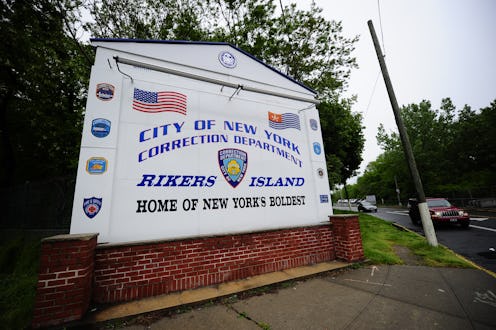News
What Is Rikers Island Really Like?
You can't deny the U.S. jail and prison system is messed up. Saturday's tragic death of Kalief Browder, who was jailed at Rikers Island for three years without a trial, shed light on the facility's shortcomings in not only rehabilitating supposed offenders, but also protecting them while behind bars. Video released showed that Browder was the target of violence from both prison guards and fellow inmates, and his was a story that matched many others' who spent time there. So what is Rikers Island really like?
Rikers Island, located in the East River between Queens and the Bronx, is home to New York's largest jail complex and one of the world's biggest correctional institutions. It has 10 separate facilities that house, on average, 14,000 men, women, and youths every day. Mother Jones lists Rikers as one of the top 10 worst prisons in the country, though Rikers technically is not a prison because it generally holds inmates awaiting trial, those with less than a year-long sentence, or prisoners being transferred to another facility. (Prisons are facilities that hold inmates serving longer sentences.) Rikers has also been the subject of a number of allegations ranging from inmate violence, staff brutality, rape, and abuse of adolescents.
In 2008, 18-year-old Christopher Robinson was killed after he was beaten to death in his cell at Rikers Island, two weeks before he was set to be released. His death shed light on a "secret society" called "the program," a sort of gladiator-style fight club correctional officers ran that allowed them to extort and beat inmates. Two officers, Michael McKie, 33, and Khalid Nelson, 37, pleaded guilty to assault charges in 2012 for their role in the complex scheme. Nelson was sentenced to one year in prison while McKie was sentenced to two years.
In 2012, 11 current and former inmates of New York City jails filed a joint suit that claimed correction officials allowed guards to beat inmates unprovoked. Those incidents, the complaint said, led to serious injuries to prisoners and caused the city to pay millions of dollars in legal settlements. Rikers was among the facilities named in the suit, but Mother Jones reported the allegations led to the building of more solitary confinement cells that were designed for adolescents and those suffering from mental illness.
That year, The Village Voice also released grisly photos of wounds prisoners incurred while locked up at Rikers. (Be warned, the images are pretty graphic.) Slashes to the face, missing teeth, stitches stretching across forearms — they showed the violence at Rikers had not stopped. In 2014, the New York Daily News reported Rikers saw 20 inmates slashed in a month, its most violent period in more than a decade.
Rikers continues to be embroiled in violence today. Use of force by correction officers skyrocketed 240 percent despite the daily population dropping by almost 15 percent, according to The New York Times. And though there have been few stories to emerge that provide some hope to the jail complex — the Daily News ran an exclusive report in March that said inmates helped rescue a female correction officer from rape after a prisoner locked himself with her behind a security door — Rikers still represents a serious problem in how we treat those behind bars.
Image: Getty Images (1)
